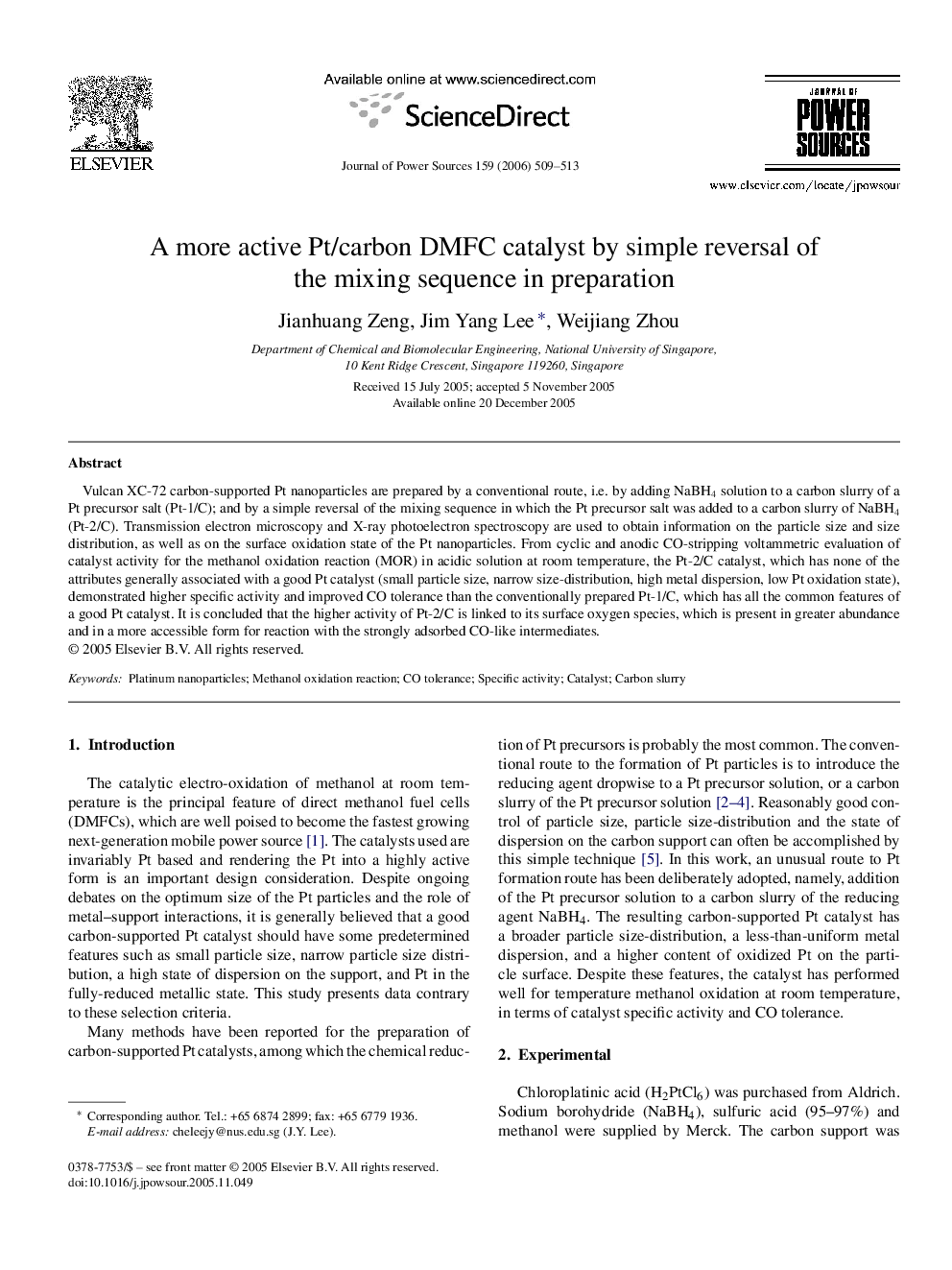| Article ID | Journal | Published Year | Pages | File Type |
|---|---|---|---|---|
| 1292624 | Journal of Power Sources | 2006 | 5 Pages |
Abstract
Vulcan XC-72 carbon-supported Pt nanoparticles are prepared by a conventional route, i.e. by adding NaBH4 solution to a carbon slurry of a Pt precursor salt (Pt-1/C); and by a simple reversal of the mixing sequence in which the Pt precursor salt was added to a carbon slurry of NaBH4 (Pt-2/C). Transmission electron microscopy and X-ray photoelectron spectroscopy are used to obtain information on the particle size and size distribution, as well as on the surface oxidation state of the Pt nanoparticles. From cyclic and anodic CO-stripping voltammetric evaluation of catalyst activity for the methanol oxidation reaction (MOR) in acidic solution at room temperature, the Pt-2/C catalyst, which has none of the attributes generally associated with a good Pt catalyst (small particle size, narrow size-distribution, high metal dispersion, low Pt oxidation state), demonstrated higher specific activity and improved CO tolerance than the conventionally prepared Pt-1/C, which has all the common features of a good Pt catalyst. It is concluded that the higher activity of Pt-2/C is linked to its surface oxygen species, which is present in greater abundance and in a more accessible form for reaction with the strongly adsorbed CO-like intermediates.
Keywords
Related Topics
Physical Sciences and Engineering
Chemistry
Electrochemistry
Authors
Jianhuang Zeng, Jim Yang Lee, Weijiang Zhou,
